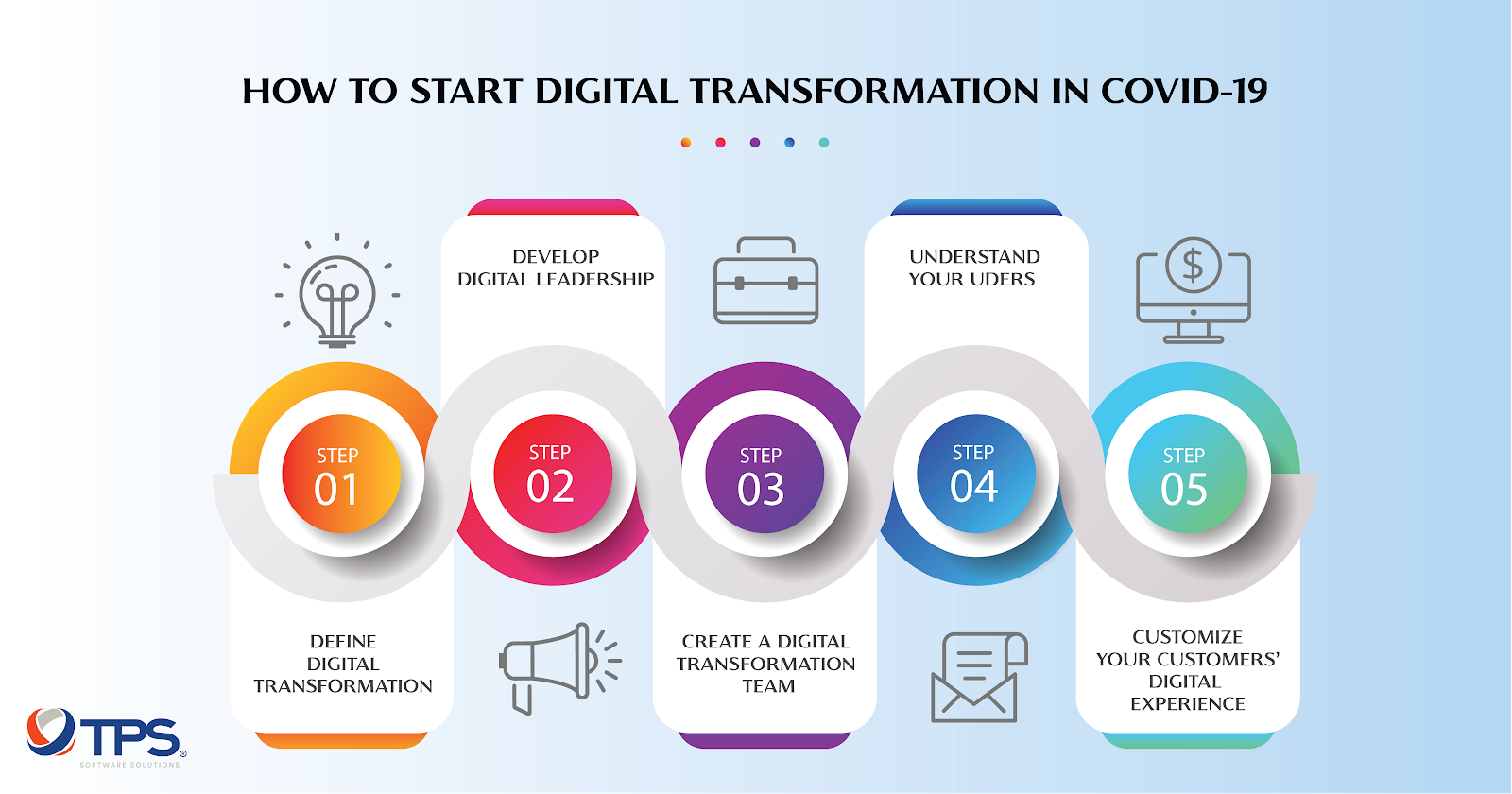The 4th industrial era is taking place, bringing an imperative demand for digital transformation. Embracing digital is no longer an option, it is a must in business today, especially in the unprecedented global lock down due to the outbreak of Covid-19. Digital transformation is currently an effective “vaccine” for businesses to resist the virus and stay competitive and relevant in the market.
Why should business kick start digital transformation in Covid-19
Digital transformation has been a point of discussion in the rise of the industry 4.0. Companies and organizations have been aware of the importance of progressing digitization, however, not all of them have put it into action. It is Covid-19 that has urged the emergency of digitalization in businesses. According to an online survey conducted on 2500 enterprise decision makers all over the world (*), 97% of enterprise decision makers believe COVID-19 accelerated their company’s digital transformation efforts.
Due to the lockdown over the globe, employees are sent home for remote working, consumers get to make purchases online, face to face interaction is significantly restricted. Hence, digital platforms have become a crucial method for businesses to stay connected with their customers and employees. 95% companies are reported to be seeking new ways of engaging customers as a result of COVID-19. 92% say transforming digital communications is extremely vital to address current business challenges. Digital communication is the new lifeblood for business to approach customers. Also, digital technologies have opened up ‘definite’ future remote work opportunities. Almost all (99%) of businesses surveyed agreed that digital technologies will open up a future of continued remote work.
Prior to the COVID-19 crisis, the drivers of technology were focused on cost reduction and productivity. The goal was to make well-run businesses run better. As we adapt to the new realities caused by COVID-19, the roles of technology will have to evolve to achieve resiliency, deliver profitability and act sustainably.
To get more insights on the benefits of digital transformation, read the article: Advantages of Digital transformation in businesses.
How to start digital transformation

1. Define “digital transformation”
The first step is to overcome false notions as to what the process should entail, the principal one being that this kind of transformation correlates with the adoption of new technologies or with the development of apps. While these may be options at some point down the line, they are not necessary initially. What companies should be doing is first evaluating and rethinking how their organization operates in terms of both internal and external operations. This will ensure the company’s point of departure for any transformation is far more relevant, and this in itself can vary dramatically from one business to the next.
2. Enlist management support and develop digital leadership
For digital transformation to be a priority, it is essential to get the support and understanding of managers who accept that digitization is not merely an accessory that may or may not improve the company’s results but an absolute necessity for the company’s survival. Convincing managers of this may first require taking another key step: changing the company innovators (or those with a traditional “welfare role” to resolve complaints raised by third parties) into leaders, putting them in a strong position to convince managers and steer the organization as a whole toward a renewed business model.
3. Create, enable and support a digital transformation team
It is important for a company to have the right people for the job when undertaking a digital transformation. This does not imply creating a team of technical professionals. Having said that, digital professionals are in demand, so it is advisable to articulate flexible labor policies.
In a context characterized by constant changes in consumer attitudes and the continuing emergence of new technologies, even the most capable digital team can have difficulties in keeping up with challenges faced during the digitization process. It is therefore crucial to outsource to third parties such as technology providers, SaaS platforms and consultants in a way that transcends the old customer-supplier hierarchical relationships and allows partnerships based on trust and loyalty. This allows a two-way dialogue to take place between collaborators and offers greater flexibility in the establishment and dissolution of partnerships.
To get more insights on how a outsourcing technology provider may help on embracing digital transformation, read the article: “5 Reasons Business Should Adopt Software Outsourcing During Covid-19”
4. Understand your users and build a UX map
Once you are fully aware of what is involved in a digital transformation process, you and your organization must ensure that you fully understand the demands of your customers. To do so, the technology currently on the market offers companies advanced data analysis solutions at a reduced cost or even for free. With these tools you can collect and analyze data to better understand how consumers interact with your digital channels, from web pages to Twitter profiles, online stores or apps.
5. Make the optimization of your customers’ digital experience
As mentioned before, the digital transformation has to cover both the external and internal parts of a company. From there on out, the business must undergo a transformation in such a way that the customers can see the changes, and be accompanied by changes to internal operations and technology. The transformation of the relationship with the customer should guide every internal change.
Embracing digital transformation is not a day night work, it takes huge effort, may you need any consultancy or support, don’t hesitate to connect with technology vendors who have a pool of experience that are able to help you get into this challenging work.
Some trends of digital information
Here are key digital transformation trends that business and IT leaders should be aware of to get into implementation :
-
Rapid adoption of digital operating models, including integrated cross-functional teams.
-
A shakeout as those that have invested in big data governance and analytics leapfrog their competitors.
-
Better use of AI and machine learning.
-
Consultancies forming new digital partnerships.
-
Expanding public cloud adoption.
-
New digital transformation success metrics.
-
More attention to the long-term value of digital initiatives.
References:
https://blog.signaturit.com/en/7-steps-to-kickstart-a-digital-transformation-in-any-company
https://www.helpnetsecurity.com/2020/07/21/covid-19-digital-transformation/














